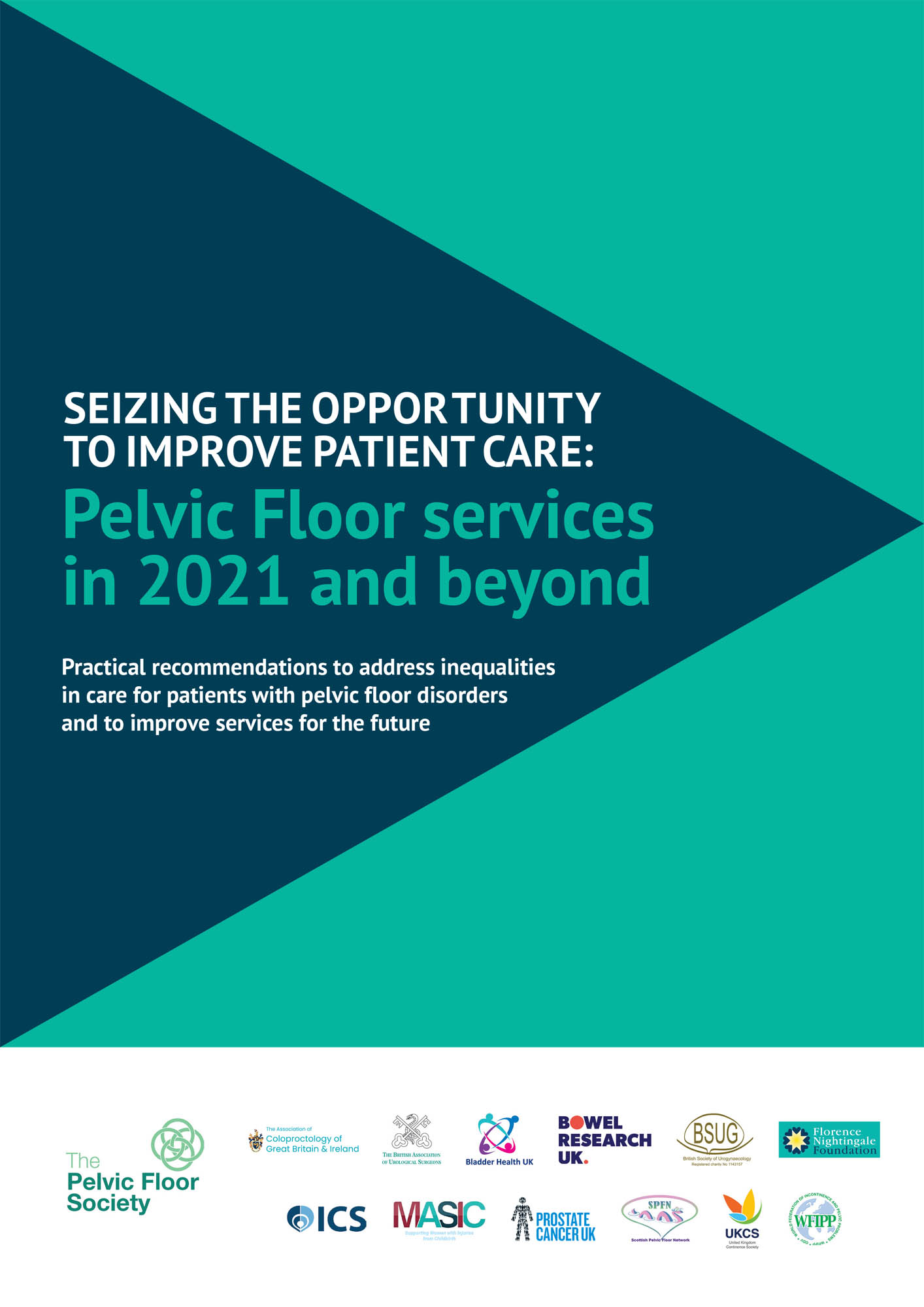

Full list of recommendations
National recommendations
These recommendations require central action from national health bodies and the Government to make changes which will benefit patients and services nationally.
- Spending priorities must consider pelvic floor disorders, particularly as this area is well-suited to generate large efficiency improvements, and this should be backed by appropriate commissioning (in England; separate systems are in place in Northern Ireland, Scotland and Wales) to help define pathways for treatment
- Improved funding of community continence care services is urgently needed to provide more consistent and efficient referrals for patients who need them and to ensure a minimum national standard of care – this should also improve earlier management, reducing the burden for hospitals and specialist centres
- A national campaign and widespread public education are required to address the taboo associated with pelvic floor disorders, to empower patients to understand the options for care and to present earlier to the right specialists, and to raise awareness of bladder and bowel health among both adults and children
- Signposting to pelvic floor services should be transparent at all levels so that patients and primary care physicians can easily access services without postcode inequalities; this will be of paramount importance as we begin to contend with the legacy of poor outcomes from pelvic floor surgery involving mesh, following the Cumberlege report
- A hub-and-spoke model is recommended to help to optimise available expertise and find regional efficiencies, while also considering how to manage emergency procedures effectively
- Improvements in education are required to guarantee the workforce of tomorrow in the community, primary and specialist care. Changes to medical school and post-registration curricula should ensure that the public health challenge of continence is recognised and addressed from an early stage. E-learning is a viable option, especially since COVID-19 has made this a widespread part of medical life
Locally actionable recommendations
We encourage HCPs and people working in pelvic floor services to consider implementing these recommendations and to ask themselves: what more can I do to improve the situation locally?
- Virtual consultations should be provided as an option for patients, but face-to-face appointments should be available where clinically indicated or requested, and to prevent inequality of access to care
- Questionnaires should be in widespread use to collect a full patient history before consultations, increasing efficiency, and could be provided online, though an alternative approach needs to be available for those with limited internet access or literacy
- Mobile apps or evidence-based information on approved websites could be encouraged to support self-management of patients’ conditions, and to provide comprehensive resources and education
- Local / regional MDT meetings should be constituted to meet national guidance; accreditation is available from specialist societies, such as the Pelvic Floor Society and British Society of Urogynaecology (BSUG), to ensure a nationally standardised approach. Virtual meeting technology should be used to optimise attendance
- Local pathways for onward referral between specialties should be made clear, where initial non-surgical management does not resolve the patient’s symptoms
- Selected procedures could be transitioned from general to local or regional anaesthesia, allowing them to be performed outside the operating theatre and freeing up space; some protocol-driven procedures could also be performed by nurses rather than doctors
- Local / regional solutions should consider the role of private institutions and premises to improve efficiencies (reduce waiting times) and maintain quality
